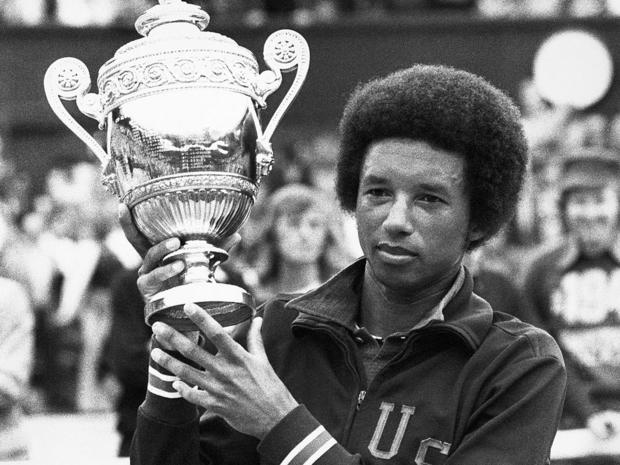Arthur Ashe, athlete and activist
With its white roof silhouetted by the New York City skyline, for 25 years Arthur Ashe stadium, a cathedral of tennis and home of the U.S. Open, has hosted some of the game's greatest moments, while honoring one of America's greatest athletes, Arthur Ashe
"Any name could have been put on this stadium, but they used a name who was about inclusion," said Jeanne Moutoussamy-Ashe, Arthur's wife. She was at the opening of the stadium named for her late husband, twenty five years ago.
CBS Sports commentator James Brown asked her, "The luminaries across the globe who showed up says what to you?"
"All of the people who were here that night, they got to see Desmond Tutu," she replied. "It was an opportunity that the name, and the event, provided for everyone who was here. And that's so spoke to who Arthur was."
And Arthur Ashe was much more than a tennis player. Born in segregated Richmond, Virginia, he was the first Black man to win the U.S. Open, in 1968, followed by historic triumphs at the Australian Open and Wimbledon
He was married to Jeanne from 1977 until his death, in 1993, from complications of AIDS, which he is believed to have contracted from a blood transfusion during heart surgery. Moutoussamy-Ashe said she wasn't just married to a world-famous athlete, but to an activist who used his racket and his voice.
In 1965, when asked by CBS News' Charles Kuralt, "Are there still country clubs in this country where you wouldn't be welcomed?" Ashe replied, "Oh yeah, there are some tournaments where I can't play, like in Alabama."
With his fame, he spoke out on race relations, and inequality. He told "Face the Nation," "In these times, 1968, it's really a mandate that you do something. You must."
Ashe's activism mimicked his tennis play – methodical, strategic, nuanced, yet impactful. "I think what may have gotten under his skin was that he didn't feel he was doing enough," said Moutoussamy-Ashe.
"Not doing more, meaning?"
"There were African-Americans who were marching, who were getting their heads beat in, getting hosed down. Arthur wasn't doing that. But he still felt that what he was doing was opening doors in his way."
Opening doors his way meant getting arrested for protesting apartheid in South Africa; being a voice for AIDS awareness; and creating the National Junior Tennis League in 1969, which continues to bring the game to underserved communities.
But for Jeanne Moutoussamy-Ashe, who is an award-winning photographer, and Arthur, it all came down to one thing: "We often talked about how the public perceives the African American image. The only image we would see would be of the way other people saw us, not images of how we saw ourselves.
"One of the reasons why I make photographs is to photograph my community, to photograph the love and the dignity that Arthur saw on an early date. The image was a profound way of showing our activism together as a couple."
With his name and image adorned on the stadium walls, the legacy of Arthur Ashe continues to serve.
Moutoussamy-Ashe said, "What I want you to know is who Arthur Ashe was, and why Arthur Ashe's name is on this magnificent structure."
For more info:
- Arthur Ashe (Official site)
- U.S. Open at Arthur Ashe Stadium, New York City
- jeannemoutoussamy-ashe.com
Story produced by Sharaf Mowjood. Editor: Carol Ross.







